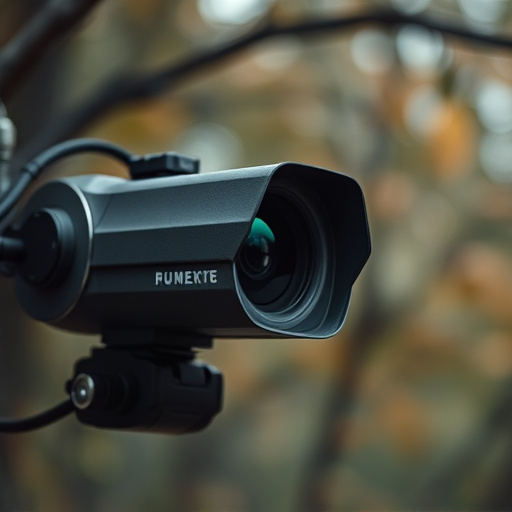Glint detection, a crucial feature in camera lenses, enhances home security by mitigating unwanted reflections from lights, improving video quality in low-light settings. Understanding glint detection and strategically placing hidden cameras is key to selecting optimal best hidden camera locations for robust home security. Common locations include mirrors, clock faces, light switches, ceiling fans, and plants. During the day, scrutinize unusual reflections; at night, use a flashlight to scan rooms. Combining human observation with apps analyzing live video feeds for sudden brightness changes or pixelations ensures a secure living environment. Nighttime visibility optimization, powered by advanced algorithms and imaging sensors, disrupts intruders' plans, making glint detection a game-changer for home security. Best hidden camera locations include corners, behind furniture, and areas with minimal direct lighting.
Uncover the secrets of your home with our comprehensive guide to camera lens glint detection at night. Understanding the basics of camera technology, we’ll show you how to identify hidden cameras and spot their telltale glints in low-light conditions. Learn effective strategies for enhancing nighttime visibility and securing your space by detecting even the most discreetly placed surveillance devices. Discover the best hidden camera locations and take control of your home security today.
- Understanding Glint Detection: The Basics of Camera Lens Technology
- Identifying Hidden Cameras: Strategies for Spotting Glints in Your Home
- Enhancing Nighttime Visibility: Techniques to Detect Glints Using Low-Light Conditions
Understanding Glint Detection: The Basics of Camera Lens Technology
Glint detection is a crucial aspect of modern camera lens technology, especially for home security purposes. The basic principle involves identifying and mitigating unwanted reflections from sources like flashlights, lamps, or even small hidden cameras. These reflections can obscure images, leading to poor video quality and potential privacy breaches, particularly in low-light conditions. By employing advanced algorithms and sensors, cameras can now detect these glints and either reduce their impact or alert users to their presence.
In the realm of home security, understanding glint detection is essential for choosing the best hidden camera locations. Strategically placing cameras where they can capture clear footage without reflecting light sources from within or outside the property can significantly enhance overall security. This knowledge allows homeowners and security professionals to implement effective countermeasures against unwanted glints, ensuring that recordings remain clear and reliable evidence for any potential incidents.
Identifying Hidden Cameras: Strategies for Spotting Glints in Your Home
Identifying hidden cameras is a crucial aspect of enhancing your home security and privacy. While many people assume that sophisticated surveillance equipment is only found in high-tech settings, glint detection can help uncover covert recording devices even within your own home. The first step is to understand where these cameras might be strategically placed. Common locations include mirrors, clock faces, light switches, ceiling fans, and even indoor plants—anything that reflects light can potentially capture images or videos of unsuspecting individuals.
To spot these hidden glints, utilize natural lighting during the day and pay attention to unusual reflections on walls, floors, or furniture. At night, use a powerful flashlight to cast beams across rooms, as this can highlight any camera lenses attempting to record. The best approach combines human observation with technology; using specialized apps that analyze live video feeds for sudden brightness changes or unusual pixelations can be an effective strategy to uncover hidden cameras in your home and ensure a more secure living environment.
Enhancing Nighttime Visibility: Techniques to Detect Glints Using Low-Light Conditions
Enhancing Nighttime Visibility: Techniques to Detect Glints Using Low-Light Conditions
In the realm of home security, ensuring optimal visibility during nighttime operations is paramount. One effective method involves employing advanced camera lens glint detection techniques, especially in challenging low-light conditions. By utilizing specialized algorithms and sensitive imaging sensors, security systems can now pinpoint and neutralize the telltale signs of hidden cameras, commonly known as glints or reflections. This capability significantly hampers potential intruders’ ability to operate undetected, making it a powerful tool for enhancing home security.
The best hidden camera locations within a residence often include corners, behind furniture, or in areas with minimal direct lighting. Detecting glints becomes crucial in these scenarios, as even the slightest reflection from an unseen lens can reveal these covert devices. Modern night vision technologies have revolutionized home security by allowing systems to analyze and interpret visual data in near-dark conditions, thereby deterring would-be intruders and promoting a safer environment.
In the realm of home security, understanding camera lens glint detection is a game-changer. By leveraging the right technology and strategies, like identifying hidden cameras and enhancing nighttime visibility, you can ensure your peace of mind. Remember that the best hidden camera locations are often overlooked, but with the techniques outlined in this article, you’ll be better equipped to spot these silent sentinels. As you navigate the landscape of home protection, keep these insights in mind to foster a safer environment for you and your loved ones.
